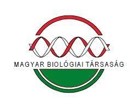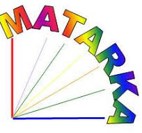Magterjedés az emberi ruházaton: megelőzési és védekezési lehetőségek
Absztrakt
Az elmúlt években az ember általi magterjesztés az inváziós fajok egyik legfontosabb terjedési formájává vált. Ez a folyamat kiemelten veszélyezteti az elszigetelt, értékes élővilágú, turisták által rendszeresen látogatott területeket. Az inváziós fajok terjedésének megakadályozásában kiemelt szerepe van az olyan védelmi intézkedéseknek, amelyek a magok és termések emberi ruházaton keresztüli terjedését fékezik meg. Irodalmi áttekintésünkben megvizsgáltuk a megelőzés és kezelés módjait, különös tekintettel a tájékoztatásra, önkéntes megelőzésre, törvényi szabályozásra, karanténintézkedésekre, monitorozásra, kezelésre és a turizmus szabályozására. Eredményeink rámutatnak, hogy a legtöbb biztonsági rendelkezést az Antarktiszon, Ausztráliában és Óceánia szigetein alkalmazzák, melyek példaként szolgálhatnak más régiókban is. További vizsgálatokra és biztonsági intézkedésekre van szükség, különösen azokban a régiókban, ahol egyelőre még nincs semmilyen rendelkezés az emberek ruházatáról származó potenciális gyom- és inváziós fajok terjedésének megakadályozására.
Hivatkozások
Ansong, M., Pickering, C. (2014a): Weed seeds on clothing: a global review. Journal of Environmental Management 144: 203–211. https://doi.org/10.1016/j.jenvman.2014.05.026
Ansong M., Pickering C. (2014b): Weed hygiene: What do we do with seeds we find on our clothing? 19th Australiasian Weeds Conference – Science, Community and Food Security: the Weed Challenge. Tasmania, Australia.
Ansong, M., Pickering, C. (2016): The effects of seed traits and fabric type on the retention of seed on different types of clothing. Basic and Applied Ecology 17(6): 516–526. https://doi.org/10.1016/j.baae.2016.03.002
Auffret, A. G., Cousins, S. A. (2013): Humans as long-distance dispersers of rural plant communities. PLoS One 8(5): e62763. https://doi.org/10.1371/journal.pone.0062763
Bullock, J. M., Bonte, D., Pufal, G., da Silva Carvalho, C., Chapman, D. S., García, C., Matthysen, E., Delgado, M. M. (2018): Human-mediated dispersal and the rewiring of spatial networks. Trends in Ecology & Evolution 33(12): 958–970. https://doi.org/10.1016/j.tree.2018.09.008
Csecserits, A., Jakab, G., Rédei, T. (2021): Új adventív faj Magyarország flórájában: az útifűlevelű kígyószisz (Echium plantagineum). Kitaibelia 26(2): 199. https://doi.org/10.17542/kit.26.199
Csiky, J., Baráth, K., Barna, P., Csikyné Radnai, É., Deme, J., Szigetvári, Cs., Wirth, T., Kovács, D. (2020): Pótlások Magyarország edényes növényfajainak elterjedési atlaszához X. Kitaibelia 25(1): 101–106. https://doi.org/10.17542/kit.25.101
Dobay, G., Dobay, B., S-Falusi, E., Hajnáczki, S., Penksza, K., Bajor, Z., Lampert, R., Bak, G., Wichmann, B., Szerdahelyi, T. (2017): Effects of sport tourism on temperate grassland communities (Duna-Ipoly National Park, Hungary). Applied Ecology & Environmental Research 15: 457–472. https://doi.org/10.15666/aeer/1501_457472
Hall, C. M., James, M., Wilson, S. (2010): Biodiversity, biosecurity, and cruising in the Arctic and sub-Arctic. Journal of Heritage Tourism 5(4): 351–364. https://doi.org/10.1080/1743873X.2010.517845
Hall, C. M. (2011): Biosecurity, tourism and mobility: institutional arrangements for managing tourism-related biological invasions. Journal of Policy Research Tourism, Leisure and Events 3(3): 256–280. https://doi.org/10.1080/19407963.2011.576868
Healy, A. J. (1943): Seed dispersal by human activity. Nature 151(3822): 140.
Huiskes, A. H., Gremmen, N. J., Bergstrom, D. M., Frenot, Y., Hughes, K. A., Imura, S., Ware, C. (2014): Aliens in Antarctica: assessing transfer of plant propagules by human visitors to reduce invasion risk. Biological Conservation 171: 278–284. https://doi.org/10.1016/j.biocon.2014.01.038
Hughes, K. A., Convey, P. (2010): The protection of Antarctic terrestrial ecosystems from inter-and intra-continental transfer of non-indigenous species by human activities: a review of current systems and practices. Global Environmental Change 20(1): 96–112. https://doi.org/10.1016/j.gloenvcha.2009.09.005
Jay, M., Morad, M., Bell, A. (2003): Biosecurity, a policy dilemma for New Zealand. Land Use Policy 20(2), 121–129. https://doi.org/10.1016/S0264-8377(03)00008-5
Kuo, I. L. (2002): The effectiveness of environmental interpretation at resource-sensitive tourism destinations. International Journal of Tourism Research 4(2): 87–101. https://doi.org/10.1002/jtr.362
Lukács, K., Valkó, O. (2018): A ruházat szerepe az ember általi magterjesztésben. Kitaibelia 23(1): 77–86. https://doi.org/10.17542/kit.23.77
Lukács, K., Valkó, O. (2021): Human-vectored seed dispersal as a threat to protected areas: Prevention, mitigation and policy. Global Ecology and Conservation 31: e01851. https://doi.org/10.1016/j.gecco.2021.e01851
Mason, P. (1994): A visitor code for the Arctic. Tourism Management 15(2): 93–97. https://doi.org/10.1016/0261-5177(94)90002-7
Mason, P. (2005): Visitor management in protected areas of the periphery: Polar perspectives. Tourism and Hospitality Planning & Development 2(3): 171–190. https://doi.org/10.1080/14790530500399523
Mason, P., Mowforth, M. (1996): Codes of conduct in tourism. Progress in Tourism and Hospitality Research 2(2): 151–167. https://doi.org/10.1002/pth.6070020204
McNeill, M., Phillips, C., Young, S., Shah, F., Aalders, L., Bell, N., Littlejohn, R. (2011): Transportation of nonindigenous species via soil on international aircraft passengers’ footwear. Biological Invasions 13(12): 2799–2815. https://doi.org/10.1007/s10530-011-9964-3
Meyerson, L. A., Reaser, J. K. (2002): Biosecurity: moving toward a comprehensive approach. BioScience 52(7): 593–600. https://doi.org/10.1641/0006-3568(2002)052[0593:BMTACA]2.0.CO;2
Moodley, D., Foxcroft, L. C., Novoa, A., Pyšková, K., Pergl, J., Pyšek, P. (2020): Invasive alien species add to the uncertain future of protected areas. NeoBiota 57: 1–5. https://doi.org/10.3897/neobiota.57.52188
Mount, A., Pickering, C. M. (2009): Testing the capacity of clothing to act as a vector for non-native seed in protected areas. Journal of Environmental Management 91(1): 168–179. https://doi.org/10.1016/j.jenvman.2009.08.002
Nathan, R. (2006): Long-distance dispersal of plants. Science 313(5788): 786–788. https://doi.org/10.1126/science.1124975
Powell, R. H. (1968): Harmful plant species entering New Zealand 1963–1967. New Zealand Journal of Botany 6(3): 395–401. https://doi.org/10.1080/0028825X.1968.10429821
Simberloff, D., Martin, J. L., Genovesi, P., Maris, V., Wardle, D. A., Aronson, J., Pyšek, P. (2013): Impacts of biological invasions: what’s what and the way forward. Trends in Ecology and Evolution 28(1): 58–66. https://doi.org/10.1016/j.tree.2012.07.013
Tollington, S., Turbé, A., Rabitsch, W., Groombridge, J. J., Scalera, R., Essl, F., Shwartz, A. (2017): Making the EU legislation on invasive species a conservation success. Conservation Letters 10(1): 112–120. https://doi.org/10.1111/conl.12214
Valkó, O., Lukács, K., Deák, B., Kiss, R., Miglécz, T., Tóth, K., Tóth, Á., Godó, L., Radócz, S., Sonkoly, J., Kelemen, A., Tóthmérész, B. (2020): Laundry washing increases dispersal efficiency of cloth-dispersed propagules. NeoBiota 60: 1–16. https://doi.org/10.3897/neobiota.61.53730
Ware, C., Bergstrom, D. M., Müller, E., Alsos, I. G. (2012): Humans introduce viable seeds to the Arctic on footwear. Biological Invasions 14(3): 567–577. https://doi.org/10.1007/s10530-011-0098-4
Whinam, J., Chilcott, N., Bergstrom, D. M. (2005): Subantarctic hitchhikers: expeditioners as vectors for the introduction of alien organisms. Biological Conservation 121(2): 207–219. https://doi.org/10.1016/j.biocon.2004.04.020
Williams, J. A., West, C. J. (2000): Environmental weeds in Australia and New Zealand: issues and approaches to management. Austral Ecology 25(5): 425–444. https://doi.org/10.1046/j.1442-9993.2000.01081.x
http1: https://www.environment.gov.au/biodiversity/invasive-species/publications/arrive-cleanleave-clean (Hozzáférés dátuma: 2022. 09. 01.)
http2: https://www.ferto-hansag.hu/hu/okoturizmus/na-tura-kodex.html (Hozzáférés dátuma: 2022.
01.)






